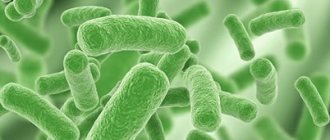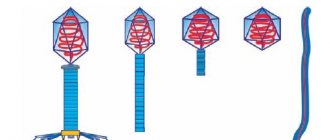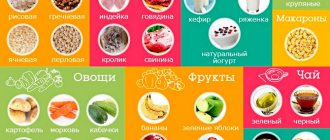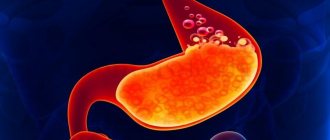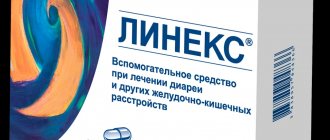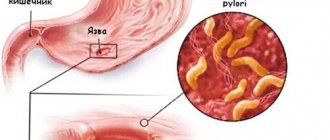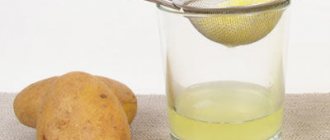Treatment of any disease is a whole complex of procedures and medications. Sometimes you look at the list and think that the doctor probably played it safe! After all, gastritis and ulcers are such studied diseases! Maybe you don’t need to take everything that is prescribed? What if we treat one thing and cripple the other?
Gastric ulcers and gastritis, although they affect the same system of the body, are different diseases. Therefore, both the principles of treatment and medications may differ, but at the same time overlap with each other. Consider tablets for gastritis and ulcers.
Common Causes
Main causes of problems:
- eating large amounts of food, which greatly stretches the stomach tissue and takes a long time to digest;
- intoxication (poisoning) after eating stale food;
- biliary dyskinesia, when the flow of bile into the small intestine is delayed or too fast;
- chronic catarrhal gastritis;
- Pankeratitis.
These are some of the most “harmless” reasons why your stomach is bothering you. But there are more serious pathologies that occur in the body during attacks.
Any acute sudden attack can signal the onset of critical conditions requiring urgent surgical intervention.
You can roughly determine your diagnosis based on the symptoms in the table below: Your doctor will be able to give you an accurate diagnosis.
| DISEASE | SYMPTOMS |
| Exacerbation of chronic gastritis is dangerous by the development of stomach ulcers, phlegmonous and atrophic gastritis, leading to precancerous conditions. |
|
| Peptic ulcer with exacerbation - when the ulcer is perforated, painful shock, internal bleeding and death are possible. |
|
| Renal colic, masquerading as an “acute abdomen ” - there is a high probability of painful shock and collapse. |
|
| Colitis, acute colitis - dangerous by transition to ulcerative colitis, thrombosis and embolism of the abdominal aorta. |
|
| Inflammation of the appendix - if there is a delay in calling an ambulance and applying a heating pad, rupture of the cecum is possible, followed by purulent inflammation of the peritoneum and sepsis. If you have similar symptoms, consult your surgeon. |
|
| Exacerbation of cholecystitis (inflammation of the gallbladder) is dangerous by transition to gangrenous cholecystitis and peritonitis (inflammation of the peritoneum). Diagnoses and advises the therapist. |
|
| Acute pancreatitis - inflammation of the pancreas - is a serious condition that requires immediate treatment in a hospital. |
|
| Myocardial infarction in the abdominal form - a spasm in the heart is often disguised as stomach pain, which poses a direct threat to life, since the provision of medical care occurs too late. If you suspect, consult a cardiologist or cardiac surgeon. |
|
When urgent help is needed
Symptoms that, in combination with epigastric discomfort, threaten a serious illness:
- temperature increase;
- chills;
- tension in the abdominal muscles (the so-called “hard” abdomen);
- vomiting that does not bring relief;
- an increase in heart rate or, conversely, a sharp decrease (bradycardia);
- severe weakness, perspiration, pallor of the skin and mucous membranes, which may indicate the onset of internal bleeding;
- fainting.
If you observe these symptoms in a person, be sure to call an ambulance.
Medicines for stomach pain: what pills to take and how to relieve the pain?
The first thing that needs to be done to improve the patient’s condition is to relieve or reduce discomfort.
On the one hand, analgesics and antispasmodics are necessary, on the other hand, there is a risk of blurring the clinical picture, masking significant symptoms and missing the onset of a serious disease.
Some drugs should not be used before a diagnosis is made, so as not to worsen the patient’s condition. Others are quite safe and recommended for use. It is best to consult a doctor. Only a specialist can accurately determine the diagnosis and prescribe the right medicine.
List of popular pills
Analgesic and antispasmodic drugs to relieve pain and spasm:
In Injections:
"Ketorolac" , " Ketorol " (one active ingredient) is an anti-inflammatory drug with an effective analgesic effect. It is used for severe and moderate pain, and has moderate antipyretic properties.
Price 50-100 rubles, release form: tablets and ampoules.
"Baralgin " is a non-narcotic analgesic, a strong antispasmodic. Suppresses intense attacks that are not controlled by other drugs for biliary, renal and intestinal colic.
Price: from 200 rubles Release form: ampoules.
In tablets:
“Spazgan” is a combined analgesic and antispasmodic, indicated for use in biliary, intestinal, and renal colic, spasms of the bladder, and chronic colitis.
Price: 100-150 rub. Release form: tablets.
“NO-SPA” is an antispasmodic agent that relieves spasms associated with diseases of the biliary system, urinary tract, ulcers, gastritis, and pathologies of the pylorus.
Price: from 60 rubles (6 pieces) Release form: tablets/ampoules.
"Xefocam" is an analgesic, anti-inflammatory drug. A medicine that has a strong anesthetic effect.
Price: from 137 rub. Release form: tablets and injections.
Trimedat. Release form: tablets. Antispasmodic acting on the muscles of the gastrointestinal tract.
For Pancreatitis:
To relieve pain in pancreatitis, use Drotaverine, Platyfillin (injections, tablets), glucose-novocaine mixture (iv drip), Gordox and Contrical (iv, drip).
Overeating, poisoning, flatulence:
“Mezim” – normalizes the functioning of the gastrointestinal tract when eating fatty and heavy foods, eliminates flatulence and bloating. Price From 79 rub.
A pancreatic enzyme that aids digestion. "Panzinorm-forte". You can also use Pancreatin.
Price: 115-200 rubles Release form: tablets.
"Smecta" - will help with diarrhea, bloating, heartburn. Price from 140 rub.
“Polysorb” is an enterosorbent that reduces intoxication of the body in case of poisoning. From 140 rub. in the bank.
“Activated carbon ” is a sorbent that relieves intoxication. Price 10-30 rub.
Heartburn, Gastritis, increased acidity:
To eliminate discomfort due to increased acidity and severe irritation of the esophageal mucosa, you can take antacids. Antacids are drugs that reduce acidity in the stomach, neutralize gastric juice, soothe the epigastrium, and eliminate heartburn and pain. These include: “ Almagel ”, “Rennie”, “Gastal”, “Rutacid”, “Ranitidine”, “Omeprazole”.
Also, an effective remedy will be Bellastesin, a combination drug that relieves spasms of the intestines, bile ducts and discomfort in gastritis with high acidity.
People often ask the question: which drug is most effective for stomach pain? In tablets, doctors recommend “ No-shpu ” - a combined analgesic and antispasmodic. Recommended for biliary, intestinal, renal colic, bladder spasms, chronic colitis. In injections, " Baralgin ", if taking the medicine in tablets is impossible or ineffective.
All of these drugs have contraindications and side effects. Therefore, their use is allowed only after consultation with a doctor, taking into account the person’s medical history and allergic reactions.
Digestive enzymes (Mezim, Pancreatin, Festal, Pangrol, Penzetal, etc.) are not used for acute pancreatitis or exacerbation of chronic pancreatitis. By activating the pancreas, they prolong the inflammatory process. Considering that a gentle diet is indicated for this condition, outside help for the digestive system is not required. Taking enzymes is possible when the exacerbation subsides.
Victoria Druzhikina
Neurologist, Therapist
Types of drugs
| View | Why do they take it? |
| Antispasmodics | Relieves spasms of smooth muscles of the stomach and other organs, and affects the cause of the spasm. Relieves pain from various spasms of the gastrointestinal tract and urinary tract. |
| Analgesics | They simply anesthetize, blocking nerve impulses, without affecting the cause of the spasm. |
| Antacids | Reduces stomach acidity when it is elevated. Neutralizes gastric juice. Effective for heartburn, ulcers, gastritis. |
| Proton pump blockers | Reduces the amount of stomach juice. Produced on the basis of Omeprazole. |
| Gastroprotectors | Protection of the gastric mucosa from external influences. |
"Magic" pills
There is a group of drugs collectively called non-steroidal anti-inflammatory drugs (NSAIDs), which we all have taken at least once in our lives, and many regularly. These are drugs that have analgesic, anti-inflammatory and/or antipyretic effects. Examples include Aspirin, Nurofen, Nice, Ketanov, Ketoprofen and others. Considering the “magical effects” of their action - relieving inflammation, pain and fever - they are prescribed by almost everyone, everyone, always. Prescribed by traumatologists, rheumatologists, therapists, ENT specialists, dentists. Plus, they can be purchased completely freely at any pharmacy. But, along with the “magical properties”, these drugs have a number of side effects that can be divided into 2 groups: cardio risks and gastro risks. Actually, gastrorisks will be discussed in this article.
FAQ
Pain in the stomach after eating, causes and treatment.
Early attacks (35-40 minutes after eating) are characteristic of gastritis and ulcers. Late (after 1-2 hours) – for duodenitis, duodenal ulcer. They may be accompanied by nausea, heartburn, belching, and a feeling of fullness in the epigastrium. To diagnose the disease, you need to do a fibrogastroduodenoscopy. Treatment depends on its results.
It hurts and radiates to the back - what could it be?
It can radiate to the back with ulcers (the posterior wall of the epigastrium and duodenum penetrating into the pancreas), pathology of the pancreas - cancer, pancreatitis. In the latter case, the discomfort is usually of a girdling nature. All these diseases are a reason to consult a doctor.
Where is the stomach and how does it hurt?
It is located under the diaphragm in the abdominal cavity, the long axis is directed from top to bottom, 5/6 of the organ is located to the left of the midline, 1/6 to the right. With epigastric pathology, a person feels colic in the upper abdomen and below the xiphoid process of the sternum. It occurs after eating or on an empty stomach, sometimes radiates to the back, hypochondrium, can have a different character (aching, cutting, dull), accompanied by symptoms of dyspepsia (vomiting, heartburn, nausea, etc.).
Myths that we encounter in daily practice
Myth 1. Using NSAID drugs in the form of suppositories is less aggressive for the stomach than taking pills
This is 100% a myth. The pathogenic, destructive effect of the drug is realized through the blood, delivering it through the vessels to the stomach.
Myth 2. Medicines from the group of antacids - Rennie, Maalox, Phosphalugel and H2-blockers (Ranitidine and Famotidine) can be used as “gastroprotectors”
In this case they are not effective.
Myth 3. You can't take proton pump inhibitors regularly
The fact is that if an elderly person has been prescribed an anti-inflammatory drug for life, it is absolutely pointless to prescribe gastroprotection for a month. In such cases, medications should be taken strictly in parallel.
Myth 4. Food products (jelly, etc.) can act as “gastroprotectors”
We will leave this myth as absolutely fantastic without comment.
Typical pathologies
Acute pain
If it appears suddenly, accompanied by vomiting and fever, then this may be a symptom of poisoning, infection, or surgical disease. There is a special form of myocardial infarction (abdominal), in which acute pain occurs not in the heart, but in the epigastrium. All of these conditions are life threatening. In order not to waste time, you need to urgently call “03”.
Strong pain
Occurs in acute gastritis, exacerbation of peptic ulcer, complications of ulcer (penetration, perforation), pancreatitis, in the initial stage of appendicitis. If it appears, you need to urgently consult a doctor or call “03” to rule out surgical pathology (we recommend asking a surgeon a question).
Doctor's advice
Analgin, Ketorol, Xefocam and other NSAIDs irritate the mucous membrane of the stomach and intestines; they cannot be used for gastritis, stomach or duodenal ulcers, hepatitis, cirrhosis of the liver, colitis. It is acceptable to use the above drugs if the pain is caused by other reasons - cancer, severe abdominal cramps that are not relieved by antispasmodics, caused by increased peristalsis during an intestinal infection, for example. The optimal drugs for any spasms, gastritis, ulcers, pyelonephritis are antispasmodics. No-shpa (drotaverine) is the standard. For pyelonephritis, Baralgin is used.
Victoria Druzhikina Neurologist, Therapist
Sharp
Characteristic of tumors of the epigastrium, pancreas, penetration of the ulcer (its penetration into nearby organs), the development of adhesive processes in the tissues surrounding the ulcer. Periodic is characteristic of gastritis, duodenitis, exacerbation of peptic ulcer. The diagnosis is established using FGDS. All these symptoms are a reason to consult a specialist.
Aching
Constant aching pain is characteristic of tumors of the stomach, pancreas, penetration of the ulcer (its penetration into nearby organs), and the development of adhesive processes in the tissues surrounding the ulcer. Periodic spasms are characteristic of gastritis, duodenitis, exacerbation of peptic ulcer disease. The diagnosis is established using FGDS.
Hungry pain in the stomach
Occurs with increased acidity. It is observed in gastritis, peptic ulcers and is quickly eliminated by antacids (phosphalugel, Rennie, Almagel). These drugs relieve discomfort, but do not treat the underlying disease. To establish the cause, you should contact a gastroenterologist or therapist.
During pregnancy
The cause may be acute and chronic diseases of the gastrointestinal tract, toxicosis, hormonal changes, and after 20 weeks - displacement of internal organs by the growing uterus. To find out the nature of the ailment, you need to consult a therapist. Pregnant women can take No-shpu and non-absorbable antacids (Gatracid, Maalox, Almagel), other drugs - strictly as prescribed by the doctor. Consult your gynecologist.
Diagnostics
To diagnose such changes, gastroscopy is used, which is the “gold standard”. An interesting fact is that about 40% of patients with erosive-ulcerative changes who take these drugs for a long time (more than 6 weeks) do not feel any discomfort or unpleasant, painful sensations. Stomach problems are diagnosed only when visiting other doctors, and not a gastroenterologist. And, conversely, in 40% of patients, despite the complaints they make, nothing is found.
What to do at home
If your gastrointestinal tract suddenly becomes ill, there are several methods that can be used to make you feel better at home. However, it is worth knowing that home remedies have a high risk of worsening the condition. They are used only if you are completely confident in the doctor’s diagnosis. In case of severe attacks that do not subside for more than half an hour, the following is contraindicated:
- warm the abdominal area with a hot heating pad, take a bath, as this can lead to internal bleeding, rupture of the inflamed intestine, perforation of the ulcer and death;
- give water and medicine if you suspect a perforation of the ulcer, which is accompanied by profuse sweat, vomiting, severe panic, and after that - a false improvement in the condition.
Non-drug ways to relieve an attack
With an accurate diagnosis, the following methods of relieving unpleasant sensations are allowed:
- If the diagnosis of “pancreatitis” has been established, then during an exacerbation it is allowed to apply ice to the pancreas area, since this slows down the development of acute inflammation, with refusal to eat for a day or two. You need to drink water.
- In case of exacerbation of gastritis, urgent home help consists of rinsing the epigastrium (if the diagnosis of acute gastritis is beyond doubt) with a solution of baking soda (a teaspoon per liter of water).
Acute sudden attacks in the abdomen are a common symptom of threatening diseases of internal organs: heart, liver, gall bladder, rupture of the cecum filled with pus, perforation of the epigastrium due to an ulcer, internal bleeding. In such cases, the first thing you need to do, without wasting a minute, is to urgently call an ambulance.
Learn more about the causes of abdominal pain and methods of treating it from the video:
Useful articles on the topic: What can pain under the left rib in front indicate? Pain in the right side under the ribs in front - what could it be?
This article has been verified by a current qualified physician, Victoria Druzhikina, and can be considered a reliable source of information for site users.
Bibliography
1. https://www.zakonprost.ru/content/base/part/431434 https://ivo.garant.ru/#/document/70349708/paragraph/11:0
Rate how useful the article was
4.3 76 people voted, average rating 4.3
Did you like the article? Save it to your wall so you don’t lose it!
Principles of nutrition
As with any other stomach disease, you need to immediately rebuild your body and start eating only healthy foods. It is strictly forbidden to eat hamburger, potatoes and other dishes, the content of cholesterol and fat in which is simply off scale. In addition, you need to eat at least five times a day. This does not mean that at each of these meals you need to eat as much as you could eat in a week. If for some reason you had to eat fatty foods, then it is best to drink either Nosh-pu or Pakreatin. Nosh-pa will relieve spasms, but pancreatin will help digest food better.
